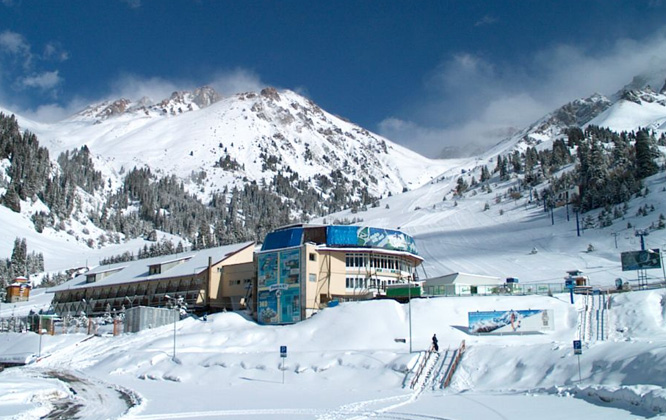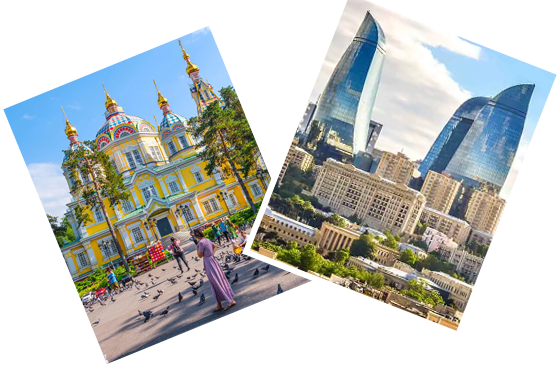
Choose your perfect travel experience
Browse our curated collection of travel destinations worldwide


Discover extraordinary travel experiences and activities

Plan your trip with our customized Eastern Africa tour packages
![]() Hassle-free booking and best price guaranteed
Hassle-free booking and best price guaranteed
![]() 24/7 support available
24/7 support available
![]() Hand-picked tours & activities
Hand-picked tours & activities
![]() Free travel insurance
Free travel insurance
Seek new roads in Eastern Africa with Dook








Eastern Africa is quintessential Africa, a page from our childhood longings of an African Safari. It is a wild territory of incredible landscapes, a realm ruled by the planet’s wildest creatures and extraordinary peoples. Comprising of 20 countries, Eastern Africa is home to the world’s greatest variety of large mammals, over 1500 species of birds, and more than a thousand varieties of colorful insects and reptiles. The Great Rift Valley, a geological wonder where the Earth’s tectonic forces are creating new plates by splitting old ones, bifurcates the region into two halves. With large lakes big enough to fit in several European nations, extinct volcanoes with snow-capped peaks visible for miles, expansive national parks inhabited by wild beasts, and a pristine Indian Ocean coastline stretching more than 2000 km, Eastern Africa embodies the true spirit of the African Safari.
A Far-Reaching Domain of Wilderness
The true home of the African Safari, this is untamed Africa at its wildest. This is where hordes of wildebeest stampede across the savannahs of the legendary Masai Mara, Serengeti, and Ngorongoro, predators like lions, leopards, and cheetahs roam the land in search of their next hunt and elephant herds migrate the plains lead by the matriarch. Overwhelming scenes of life and death coexist together on the vast fields where prey band together to scare away lonely predators, playful gorillas play around in the abundant flora and chimpanzees swing from canopy to canopy in the dense montane forests. Giraffes run freely through the vast plains and hippos are found lazing in the water bodies. Mount Kilimanjaro towers above the entire region as birds of every variety flock to its shores and waters creating magnificent kaleidoscopes. Exploring a truly wild region with such intensely rich flora and fauna is an extraordinary experience that will stay in your memories long after you leave the land.
A Land of Colorful Cultures
The plethora of people and cultures coexisting in Eastern Africa make the region a vivid, multicultural mosaic of life and nature. Whether you’re tracking the Big Five with the red-clothed Masaai people or soaking up the Swahili culture in Zanzibar, whether you’re hunting for wild berries with the forest-dwelling people or standing in solidarity at the Kigali Genocide Memorial, the history, culture, and people of Eastern Africa never fail to captivate. Because of its rich history and importance in the trade routes, the region is now a melting pot of Arabic, Islamic and Western influences, and be found in major cities like Mombassa, Kampala, or Nairobi and the coastal towns such as Lamu and Stone Town. Although the ground realities of life in the region are often turbulent, the people of East Africa will always make you feel welcomed with their warmth and hospitality.
A Coastal Paradise
The East African coastline is a melting pot of cultures, societies, and influences unlike anywhere else on the planet. The port cities of the region have been critical stops in trade, since the days of the Maritime Silk Road. With the arrival of foreign traders, also came foreign cultures and traditions, and the influences of Western, Arabic, and Asian cultures still remain prominent today, in the languages, cuisines, and architecture found here. The dark legacy of the infamous centuries-old slave trade has also left its mark on the region, especially on the island of Zanzibar, which was the largest center of the slave trade in East Africa since the 17th century.
Fascinating stories of human culture and spirit come together in East Africa’s Indian Ocean coastline. From Lamu to Mafia Island, the intertwining of Swahili and other cultures is distinct and provides plenty of opportunities to laze around in near desolate beaches, catch magnificent sunsets, dive among vivid marine life, and sail aboard a dhow.
Top Places to Explore in Eastern Africa
From a coastline surrounded by aquamarine waters with vivid marine life to an interior featuring massive dense forests teeming with the largest concentrations of wildlife on the planet, East Africa will always have a surprise for you, no matter where you travel in the region. Here are our favorite, go-to destinations in Eastern Africa.
1. Masai Mara, Kenya
The Masai Mara is the quintessential African Safari. Chances are, when someone talks about Africa, the one image that comes to everyone’s minds is that of the red setting sun silhouetting giraffes, over the vast savannah of Masai Mara. The second is the image of the great wildebeest migration, which also occurs in Africa’s most famous national park. Although both have become an African cliche of sorts, it lives up to the image. Apart from the great animals that roam the Masai heartland, there are also several less talked about Masai villages, which give explorers a glimpse into the fabulous culture of the Masaai people.
2. Serengeti National Park, Tanzania
Located just south of the Masai Mara, the Serengeti National Park shares all the characteristics of its northern counterpart, from huge migrations to predators lurking in the bushes. Except, this national park is about ten times bigger than the Masai Mara, with a greater variety of habitats and ecosystems. With more open spaces, crowds are also thinner, as most tourists prefer visiting the Kenyan savannah.
3. Volcanoes National Park, Rwanda
High on the cliffs of the Virunga Mountains in Rwanda, lies the awe-inspiring Volcanoes National Park. The home of mountain gorillas and Golden Monkeys, the Volcanoes National Park is Rwanda’s most treasured natural reserve. The park provides sustainable safaris to travelers and offers the adventure of a lifetime with gorilla tracking, monkey spotting, cave exploration, and volcano hiking.
4. Ngorongoro Conservation Area, Tanzania
In the Masaai dialect, the word ‘Ngorongoro’ means the gift of life. This is fitting as the Ngorongoro Crater, located within the Ngorongoro Conservation Area is home to the densest concentration of wild animals in Africa. The area covers more than 8292 sq km and features volcanic lakes, prairies, savannah plains, woodlands, and various micro-climates. The caldera of a two million-year-old collapsed volcano forms an unbroken, 2000 feet high rim around a natural amphitheater within which the high drama of predator and prey is enacted on a grand canvas. Home to over 30,000 mammals, where zebras, giraffes, and elephants co-exist with predators like lions, cheetahs, leopards, hyenas, and a vast cast of smaller animals and birds, the Ngorongoro Conservation Area forms one of the most compelling wildlife destinations in Africa. For adventurous travelers who wish to experience the action of the wilderness, there is no better place than the African Mecca of the Ngorongoro Crater in Tanzania.
5. The Great Rift Valley, Kenya
The Great Rift Valley is one of the world’s largest terrestrial geographical features running from the Jordan Valley in the north and meandering through the Red Sea, Eritrea, Ethiopia, Kenya, Tanzania, Malawi before finally reaching the sea near the Zambezi Delta. Measuring about 6000 km from north to south, the Kenyan section is often called the most beautiful, with scenic lakes, twisting roads, and some of Kenya’s wildest areas. Highlights of the Great Rift Valley include the scenic freshwater Lake Naivasha, the dramatic cliffs of Hell’s Gate, the craggy crater of Mount Longonot, the shallow, alkaline Lake Elmenteita, and the busy Lake Nakuru National Park with its waters crowded by pink flamingoes.
6. Zanzibar, Tanzania
Lodged off mainland Tanzania in the turquoise blue waters of the Indian Ocean, the island of Zanzibar is an eclectic mix of palm tree-lined, white sandy beaches, colorful sailboats, and a delectable fusion of different cultures. The jewel of East Africa’s Swahili coast, Zanzibar has been a key stop in the historic routes for centuries with slaves, spices, ivories, etc bound for Arabia passed through here. This led to the island becoming a melting pot of cultures and influences, evident in the Omani style architecture such as Stone Town, the historic heart of Zanzibar, spice plantations, and the diverse range of dishes found in the restaurants. Far away from the coastal hubs are vast sprawls of dense mangroves, traditional villages, and quiet coves, where travelers can dive and explore century-old shipwrecks.
7. Nosy Boraha, Madagascar
Once a safe retreat for history’s most notorious pirates such as William Kidd, Oliver Lavasseur, and Henry Avery, the tranquil island of Nosy Boraha or St Mary’s Island is one of Madagascar’s most beautiful and charming spots. Filled with an air of mystery where tombstones marked with skull and crossbones add to the intrigue of the tales of lost and hidden treasure. Unspoiled by mass tourism, the tropical oasis also feature vast forests, wild landscapes, sandy beaches, and coral reefs. The island is also known as a meeting point for humpback whales, offering a striking spectacle of hundreds of water jets from blowholes and breathtaking jumps.
8. Bwindi Impenetrable Forest, Uganda
In southwestern Uganda on the edge of the Rift Valley, mist-covered hillsides are blanketed by Uganda’s oldest, densest, and most diverse rainforest. The Bwindi Impenetrable Forest dates back almost 25,000 years, houses over 400 species of plants, and provides shelter for about 400 mountain gorillas, about half of the population in the world. Other mammals such as baboons, chimpanzees, elephants, and antelopes along with more than 350 bird species call this forest home. The Bwindi Impenetrable Forest, as the name suggests is a destination unlike any other, the most ancient cradle of life in Africa which is said to have survived even the Ice Age. The nearby towns of Buhoma and Nkuringo offer travelers everything they need for a safari into one of the oldest, densest forests in the world.
9. Tofo, Mozambique
Nestled in the eastern nooks of Mozambique, Tofo is an off-the-beaten-track beach town destination with nearly deserted beaches, large sand dunes, epic diving opportunities, and the presence of magnificent sea creatures such as manta rays, whale sharks, and humpback whales. Tofo is one of the very few destinations in the world that offers travelers an extensive ocean safari. Divers of all skill levels can take the plunge into the turquoise waters of the Indian Ocean for a grand adventure of swimming among the vibrant sea life including whale sharks, manta rays, dolphins, humpback whales, and a wide variety of fishes.
10. Lamu Island, Kenya
Lamu Island, just a stone’s throw away from the Kenyan coastline, is one of the oldest Swahili settlements south of the Sahara. Lamu is a distinctive beach and cultural destination in Africa with a rich history that dates back to the 14th century. The island is an embodiment and preservation of the way of life during the simpler times and due to its cultural affluence, Lamu Island became a UNESCO World Heritage Site in 2001. The coral reefs and habitats of the archipelago are protected by the Kiunga Marine National Reserve. The ecosystems of the region comprise of mangrove forests, coral reefs, and soft sand beaches. Migratory birds rely on the islands for nesting grounds together with sea turtles who are also frequent visitors and subject of many conservation projects. Below the water, there is a plethora of marine life, from the smallest sea creatures to giant fishes and other migratory marine creatures.
11. La Digue Island, Seychelles
Seychelles, a few tiny dots on the western Indian Ocean, at the crossroads of Asia and Africa is known as the jewel of the Indian Ocean because of its postcard-perfect beaches, lush tropical climate, and a vast variety of marine and animal life. La Digue is one of the most picturesque islands of Seychelles and often referred to as the island that time forgot. Home to the most photographed beach in the world, the Anse Source D’Argent, La Digue also offers a slice of the traditional Seychellois way of life. Former plantations such as Chateau St Cloud and L’Union Estate provide deep insights into the history of Seychelles.
12. Mt Kilimanjaro, Tanzania
Mt Kilimanjaro is the highest free-standing mountain in the world. Being a volcano that rose out of the Great Rift Valley, there are no mountain ranges enveloping the mighty Kilimanjaro. Travelers can choose to climb it or simply gaze at it from afar, but there’s no doubt that taking in the sight of the snow-capped Kilimanjaro bang in the middle of the equator is a quintessential African experience. And Mt Kilimanjaro National Park is for once not about the wildlife, but the protection of the volcanic mountain itself. Kilimanjaro lies at the heart of the park, rising from low-lying farmlands through lush rainforests to alpine meadows and finally across the lunar landscape of the twin peaks of Kibo and Mawenzi.
13. Charamel, Mauritius
Charamel is a small village in southwestern Mauritius very close to the touristy Le Morne peninsula. The small village is a big travel destination in Mauritius because of its mysterious geological wonders, waterfalls, locally produced rum, and endemic flora and fauna. The biggest aspect of Charamel that draws curious travelers is the magnificent Seven Colored Earth. Perfectly shaped sand dunes of vivid colors blend into the wild surroundings of southern Mauritius. The volcanic activity that created this incredible palette of colors happened between 3.5 and 1.9 million years ago, and nowadays you can spot seven distinct colors - green, yellow, brown, red, purple, violet, and blue. In close proximity lies the Charamel Waterfall, the highest single-drop waterfall in Mauritius, surrounded by lush greenery and fed by two rivers. Other attractions in the area are The Charamel Rum Distillery, very popular among tourists and locals alike, the Ebony Forest, known for conserving endemic plant species, and the Black River Gorges National Park, a great place for hiking and wildlife watching.
14. Malindi, Kenya
Located 115 km north of the port of Mombassa, the smaller port of Malindi is one of East Africa’s busiest sea resort towns. Malindi is as old as Mombassa, and have found its mention in ancient Chinese records. Because of its superb beaches, fine water sports opportunities, and proximity to pristine coral reefs, Malindi has become a coastal paradise in its own right. Over the years, Malindi has transformed into an Italian holiday destination and it is in Malindi where the unlikely pair of Italian and Swahili cultures collide.
Embark on an East African Safari with Dook
East Africa evokes the childhood longing for adventure within all of us. From the craters of the Kilimanjaro to the depths of the Mozambique Channel, there is an awesome adventure, hospitable people, rich cultures, and fascinating tales of history. Dook International offers crafted East Africa Tour Packages for all types of travelers. Whether you’re looking for a quintessential African safari or you’re after more offbeat experiences, we have an East African holiday package for you. Contact us today to begin your safari to East Africa.
Testimonials
"Our trip with Dook International was just fantastic. We learnt about Vietnam history and culture. We have also tried delicious food of Vietnam and indulge in different adventures…”
Dr.Ramesh Keval chand

Ready to venture out into the world? Fill the form below and start your brand new journey with us

